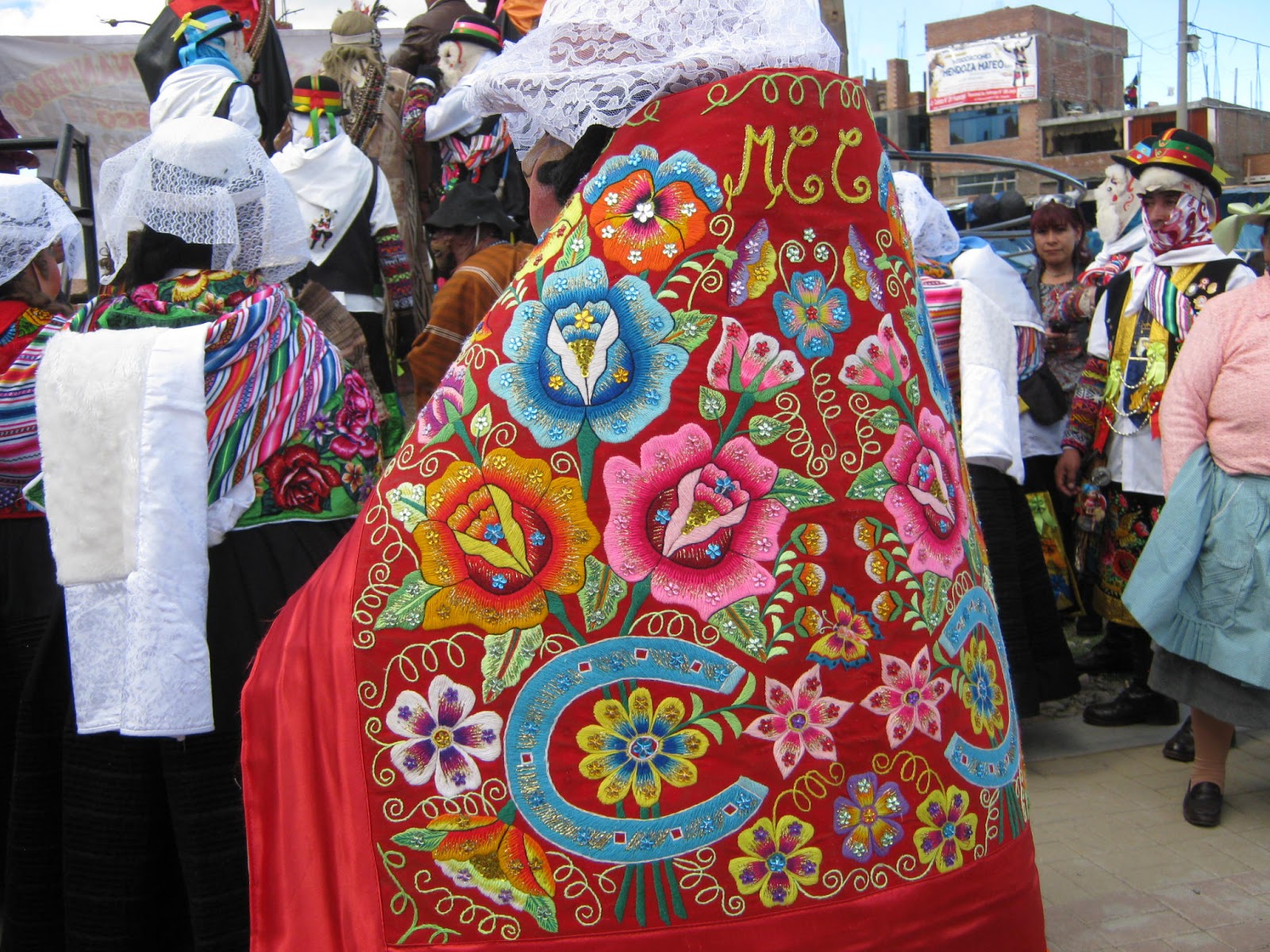All around the plaza the streets
were lined with stalls selling food and goods. Pork was popular. And here, it’s
really clear that pork comes from a pig. Recently.
And that meant lots of work for the knife sharpener.
I stopped for a treat at this stall.
A family from Marcos was there. This neighbor recognized me
and sat with me to keep me company.
After my snack, I went to see the action. In the plaza, the dancers performed in the center of the
plaza.
On a stage nearby, the orchestras played.
And the announcers kept us informed.
The judges watched and gave scores
All around the plaza, there were wooden viewing stands that
had been erected so people could watch the show.
Each group of dancers marched in with their banner, carried
by leaders from their sponsoring organization. These people are probably the
steering committee of a community farmer’s association.
But is just as tied to the cell phone as you or I.
Huanaca represents the descendants of the Inca, and the
upper class of Xauxa who made alliance with the Spanish invaders and settled
into the middle class. These dancers had amazing embroidered mantas and
dresses. Here’s front and back of one costume:
And another
This character is “Chuncho”, who represents the people of
the jungle. Chuncho usually carries a bow and arrow, to represent the role they
played in the fight for independence from Spain. He carries products of the
jungle as well. For thousands of years there has been brisk trade between the
Andes, where I live, and the jungle to the east.
Indio is lower class and represents the exploited
campesinos.
These two are the domineering Maria Pichana and her cowed
husband Viejito.
Cuzquena represents a woman of Cuzco, with her artisan goods
And Jamille is the curandero, or herbalist.
Arriero is the trader, from Argentina, who travels
everywhere and encounters all the other types of characters.
I noticed that this character always wore spurs.
That got me interested in feet. Here's part of my series of photos
of dancers’ feet.
I love the fiestas here.






































Ah, a festival! Parties seem similar all over the world - people having fun! Thanks so much for the pictures, Alane. They are wonderful.
ReplyDeleteHI Alane,
ReplyDeleteI just saw your Blog. I am so happy you ended up in Peru. It sounds wonderful. There is a chance that my boyfriend and I will be taking a trip to Peru December 2013. If we do and you are around perhaps we will come visit! Keep me posted on your adventures and if you want to write up an article on your service I can see about getting it published in the Durango and/or FLC papers.
Email me on my work address..
Lauren